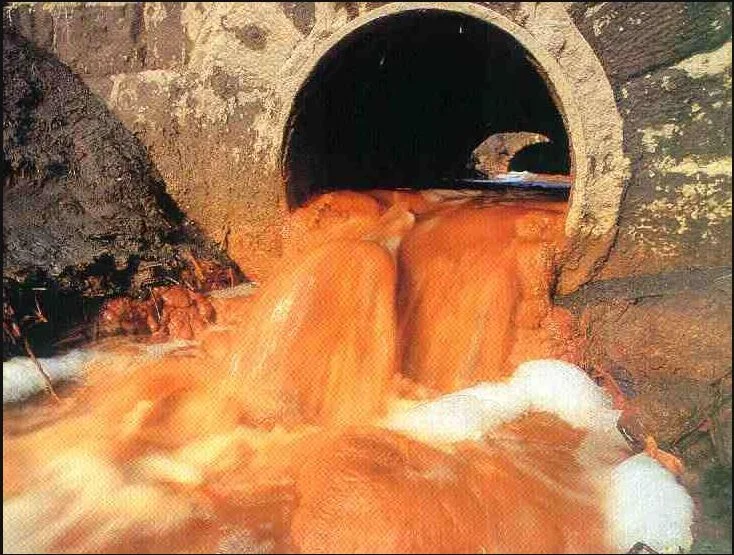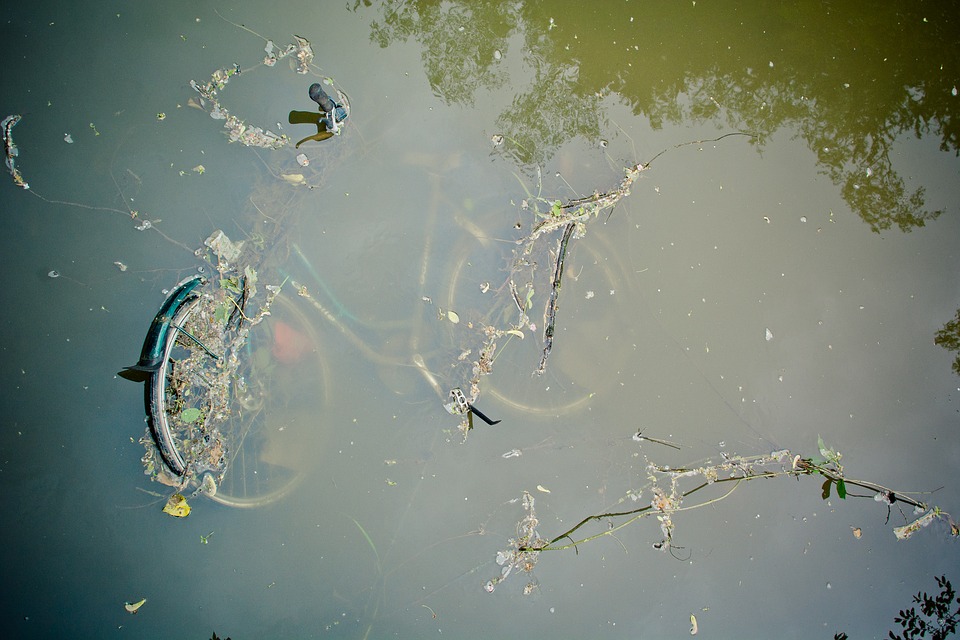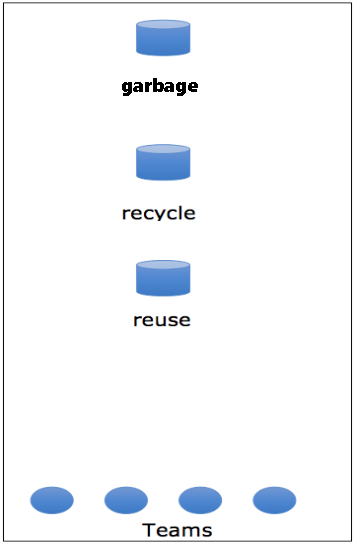Operation Water Pollution
Operation Water Pollution enables students in grades five to twelve to learn about water pollution (including what causes it, how it is cleaned up, how it can be prevented, and what they can personally do about the problem). The Operation Water Pollution program directly connects with science and social studies curricula.
Generally, sponsored Operation Water Pollution kits are sent to schools every Monday during the school year. Purchased kits are usually sent on the same dates, but teachers can request that they be sent as soon as possible and we will do our best to accommodate their request.
Notes to teachers from Tracy Webb, Science Teacher and Member of the SDWF Board of Directors:
The 12 lessons in the Operation Water Pollution program represent a comprehensive unit on water issues. Each lesson generally builds on the previous one and includes relevant, up-to-date, and well-researched fact sheets and background information. However, teachers may use any lesson on its own, or any combination, understanding that they may need to add some of the background information provided in other lessons. Every lesson can be further modified or enriched for the age and abilities of students, from grades 5 to 12. Lessons may be easily changed to reflect local conditions and situations as well, especially if teachers are/become aware and informed about their own area's water issues.
For the experimental activities, teachers may wish to substitute according to their own available supplies and/or approach to the lesson. Quantities suggested in the lesson may also be adapted as determined by the teacher.
Every lesson includes additional suggested activities and resources, along with references to other sources of information.
Cost
For lessons five and six you will need a digital TDS meter and a digital pH meter. These digital meters are included in Operation Water Pollution kits, which are available from the Safe Drinking Water Foundation.
The cost of an OWP kit is $170 and includes both a digital TDS and a digital pH meter. It should be noted that each meter is guaranteed to be reusable for at least two years. Many school kits are available free of charge as a result of different sponsors. However, if there is not a sponsored kit available for your school or you want a kit right away it is best to purchase a kit.
Or, phone us at 1-306-934-0389 to pay for your kit with Visa or MasterCard.
Or, mail a cheque payable to Safe Drinking Water Foundation to:
Safe Drinking Water Foundation
#1-912 Idylwyld Drive North
Saskatoon, SK S7L 0Z6
Important Notes about the TDS Meter:
To use the TDS meter, immerse the meter into the water/solution up to the max. immersion level (2"), lightly stir the meter to dislodge any air bubbles. Wait until the display stabilizes. Once the reading stabilizes (approximately 10 seconds), press the HOLD button to view the reading out of the water. After usage, shake off any excess water from your meter and make sure to turn the meter off to preserve battery power.
Note that if the TDS is 1000 or higher there will be a flashing 'x10' symbol, multiply the reading by 10.
Important Notes about the pH Meter:
Your PH-80's sensor must be wetted in the electrode storage solution for at least 15 minutes prior to use. The solution is inside the large Mylar packet (included). Simply pour this solution into the cap, so that the sponge is moist. Excess solution can be poured out. Insert the meter into the cap and stand upright for 15 minutes.
The smaller Mylar packet contains a 7.0 buffer powder to be used for calibration. Mix the contents of the packet with 100 mL of distilled water. When stored in a sealed container, the solution will last approximately 2-4 weeks. Additional pH buffers and storage solution can be purchased from gardening and science stores, as well as major online retailers. Your meter was factory calibrated to pH 7.0 as a convenience for your first few uses. Calibrate your meter at least once per month. When taking the pH measurement, lightly swirl the meter to ensure the removal of air bubbles or electric charges. The meter will display a reading almost instantly. Keep the meter in the water until the reading stabilizes (up to 30 seconds). To view the reading out of the liquid, click the HOLD button. This will freeze the reading on the screen. Clicking HOLD again will release it. After using the meter, make sure to turn the meter off to preserve battery power, and shake off any excess water and rinse with low TDS water (such as distilled or reverse osmosis).
Both the pH meter and the TDS meter also measure temperature. To learn more about water temperature and how it affects the water and its treatment please read our Water Temperature Fact Sheet.
Overview materials
Through a variety of activities and cooperative learning strategies, the students explore the causes, effects and sources of water pollution in the world and in North America. Students also use hands-on activities to simulate water pollution and water filtration scenarios.
Alberta Grade Five Science Unit E: Wetland Ecosystem 9: Identify human actions that can threaten the abundance or survival of living things in wetland ecosystems (ex: adding pollutants)
Using the PH-80 meter to measure the pH: Electrode Storage: Your PH-80’s sensor must be wetted in the electrode storage solution for at least 15 minutes prior to use. The solution is inside the large Mylar packet (included). Simply pour this solution into the cap, so that the sponge is moist. Excess solution can be poured out. Insert the meter into the cap and stand upright for 15 minutes.
As an activist for clean drinking water, it is your mission to make sure that everyone is aware of all of the drinking water problems in Canada. Lately, there have been recent findings with the Alberta Oil Sands developments and contaminated water. A tailings pond for an oil sands development has contaminated the Churchill River and the polluted water is now flowing downstream.
You are a researcher for Environment Canada, specifically Canada’s coastlines. Recently, there was an oil tanker spill on the BC coastline. This oil spill has been devastating for the local economy and the ecosystem as a whole.
LESSON 1: Lesson and related resources
The students will develop a definition of water pollution that will be used for this series of lessons. The students will also see pictures of water pollution and begin to develop an idea of the causes and sources of water pollution.
Presentation of Pictures of Pollution to accompany Operation Water Pollution Lesson 1. Also be sure to use the questions which accompany this presentation.
Slide 2: What is wrong with the water? Orange, Foam, It is the colour of the rocks and the cement, It comes from somewhere and will flow into a river or another source of water
Slide 3: What do you see that is polluting the water in this picture? Car oil, Gas, Car tires, Garbage, Algae
Have you ever seen water pollution? Where did you see it? What type of water body was it in? What was the pollution (type)? Did you tell someone about it? Did you try to clean it up?
LESSON 2: LESSON AND RELATED RESOURCES
The students will determine the different types of water pollution. They will also identify ways water pollution spreads.
When the biodegradable wastes enter the water supply, they become a food source for aerobic bacteria (oxygen using bacteria). If a large amount of waste is present, then a lot of bacteria can feed on it.
What are the 8 major types of water pollution? Biodegradable waste, Nutrients, Heat, Sedimentation, Chemicals, Radioactive pollutants, Medical, Microbiological
LESSON 3: LESSON AND RELATED RESOURCES
Students will be able to list different sources of water pollution and understand which types of pollutants are produced by these sources. They will also be able to describe the effect of water pollution on aquatic life and humans.
Even wastewater that has been treated often contains high levels of biological contaminants, phosphates, nitrates and even some medications. Before treated wastewater can be released back into a water source, it has to meet certain guidelines regarding quality and level of contaminants. But accidents can happen and wastewater can be released without being treated at all.
Cause & Effects of Water Pollution PowerPoint Presentation. There are 3 major sectors of society that cause water pollution. What are they?
Industry – What pollutants does this create? Gas, Oil, Plastics, Mining, Batteries, Radioactive materials, Acid rain, Greenhouse gases, Warm water, and Sediment
Water Pollution Poster Grading Rubric. Posters are graded based on information (general description, pollution source, how common the type of pollution is, etc.), use of pictures, and presentation of product (spelling/grammar, visually appealing)
LESSON 4: LESSON AND RELATED RESOURCES (The digital meters in the operation water pollution kit are helpful for this lesson)
The students will be able to describe how the three types of water pollution appear on their own and how they look when combined. Students will also be able describe the difficulties facing pollution clean-up.
How would you remove the pollutants now? Should it be filtered? Should it have bleach added to it? Should it have other chemicals added to it?
Types of pollution - what are they? Biodegradable wastes, Nutrients, Thermal, Sediment, Chemical, Radioactive, Medicinal, Microbiological
Make Some Water Pollution: Take Home Activity Bring Some Pollution From Home Each person will draw a slip of paper with a type of pollution on it, bring your pollution from home tomorrow
Lesson 5: Lesson and Related Resources (The digital meters in the operation water pollution kit are used in this lesson)
Students will experiment with different types of water pollution to see first hand how pollution affects water. Students will begin to develop an understanding of the economic impact of water pollution. Students will develop a water filter diagram to demonstrate the difficulties associated with cleaning polluted water.
Water pollution is a very complex pollution in how it forms how it is cleaned up, and its capacity to spread far and wide. This activity will help you understand why water pollution is everyone’s responsibility and why we should work together to fix the problem.
Congratulations on polluting your water source! Now clean it up. On the table on there are all the materials you need to build a water filter.
1. What are the pollutants your group will be adding to the clean water? 2. When you have added the pollutants, what do you think will happen to the water? 3. What is the TDS value for your clean water? What is the pH value for your clean water?
Diagram of a sample water filter. Inside the 2 litre plastic bottle there would be coarse gravel, fine gravel, coarse sand, activated carbon, fine sand, a cotton ball, and cheese cloth.
Water Pollution... and how to clean it up! Experiment with different types of water pollution. Make your own water filter. What are the 3 groups of pollution? Hydrocarbons: Gas, oil, etc., Dissolved substances: Chemicals, fertilizers, medicines, Solids: Plastic water bottles, garbage, etc.
Lesson 6: Lesson and Related Resources (The digital meters in the operation water pollution kit are used in this lesson)
Students will construct a water filter in order to understand the complexity of cleaning polluted waters. Students will also develop an understanding of the complex economics regarding water cleanup and the differences in available resources among different countries.
You are residents of Seusse, a small town (population 500) located three hours from the city of Katinthehat (population 50, 000). The drinking water is taken from the Greanegznhamm River. The river passes through the city before it gets to your town.
Price tags for filter materials for Lesson 6 of Operation Water Pollution. Price tags for 2 litre pop bottle, 1 cup fine sand, 1 cup coarse sand, 1 cup fine gravel, 1 cup coarse gravel, 1 cup activated carbon, 1 cotton ball/piece of cotton batting, 1 piece of cheese cloth/coffee filter, 1 rubber band, and 1 clear cup.
1. Was there any difference in the water for each group before it was filtered?
Yes there was: the urban communities rely on having good source water (fairly clean, little to no contaminants). The rural and aboriginal communities often get what the urban communities don’t want and therefore they often have poor quality source water.
Water Pollution Chart for Lesson 6 of Operation Water Pollution. Community name, Population, Water Source, Pollutants visible in sample, Possible pollutants in sample, TDS before adding bleach, pH before adding bleach...
Diagram of a sample water filter. Inside the 2 litre plastic bottle there would be coarse gravel, fine gravel, coarse sand, activated carbon, fine sand, a cotton ball, and cheese cloth.
Build a Water Filter: How do economics affect the quality of the filter that you build?? Global water treatment issues.
Lesson 7: Lesson and Related Resources
Students will discuss the process of cleaning polluted water in terms of filtration. Students will also look more closely at other types of water clean up such as air stripping, bioremediation, and phytoremediation.
70% of the earth is covered by water but only 2% is drinkable, fresh water One litre of wastewater pollutes about eight litres of freshwater. There is an estimated 12,000 km³ of polluted fresh water worldwide
Picture Source for the Reversing the Effects of Pollution Presentation for Lesson 7 of Operation Water Pollution. Links to the picture sources for slide 1 and slide 5.
Reversing Water Pollution: PowerPoint presentation with blanks. How is polluted water cleaned? Not easy to reverse the effects of water pollution. It can be very expensive too. There are 2 common ways to fix pollution... what would they be??
Reversing Water Pollution Water Facts: 70% of the Earth is covered by water but only 2% is drinkable, fresh water, one litre of wastewater pollutes about eight litres of freshwater, it's estimated that there is 12,000 km^3 of freshwater worldwide.
Lesson 8: Lesson and Related Resources
Students will use the numbers gathered by observation to demonstrate the proliferation of plastic water bottles in society. Students will learn the true cost of bottled water in terms of oil, waste, and pollution.
One of the problems with bottled water is the bottle that the water comes in. These bottles can cause major problems in the environment and for the person drinking from them.
In order to determine the cost of water we have to do a little math first. 1. As a class, calculate the number of bottles seen 2. Assume that each bottle was 1 litre and complete the following calculation: Total number of bottles x 1 litre/bottle = Total number of litres
1 tonne = 1000 kg
2.7 million tonnes x 1000 kg/1 tonne = 2 700 000 000 kg plastic for water bottles and, therefore, 2 700 000 000 kg PETs
2 700 000 000 kg PET x 17.5 kg water/1 kg PET = 47 250 000 000 kg water
Lesson 9
Students will learn about microplastics and students will learn how to properly dispose of plastic items in their community
Lesson 10: Lesson and Related Resources
The students will work together to develop strategies for decreasing incidents of water pollution. Students will also analyze two short videos and determine how effective the strategies for reversing water pollution are and if they are applicable to their community.
My ninth grade class recently learned about water pollution and how many communities across Canada are using polluted water sources for their drinking water. In our community, there is one major water source that is definitely polluted.
Lesson 11
Students will develop a list of necessary steps to take prior to building a water treatment facility. Students will also explore the perspectives of an engineer and a water keeper, including what steps are taken in preparing to build a water treatment facility, who should be consulted and what they are responsible for.
LESSON 12
Students will develop a list of necessary steps to take prior to building a water treatment facility. Students will also explore the perspectives of an engineer and a water keeper, including what steps are taken in preparing to build a water treatment facility, who should be consulted and what they are responsible for.
Crapshoot Film, Lessons and Resources
Watch Crapshoot: The Gamble with Our Wastes. Also, watch the webinar about how to make an environmental video, with Crapshoot Director-Editor Jeff McKay.
Have the students make a poster to raise awareness about the issue of sewage. Split them into groups of 2 or 3 and have them pick three pieces of information that really stood out for them and that they felt other people should be aware of.
1. Why do the Hindu people bathe and sip the very polluted water of the Ganges River? 2. What percentage of Canadian coastal communities dump their sewage raw? 3. What is "reclaimed water"?
1. Why do the Hindu people bathe and sip the very polluted water of the Ganges River? It is sacred, to take away their sins. 2. What percentage of Canadian coastal communities dump their sewage raw? 80% 3. What is "reclaimed water"? Sewage that has gone through a treatment plant.
Links to Related SDWF Fact Sheets
Conventional Water Treatment: Coagulation and Filtration




















































